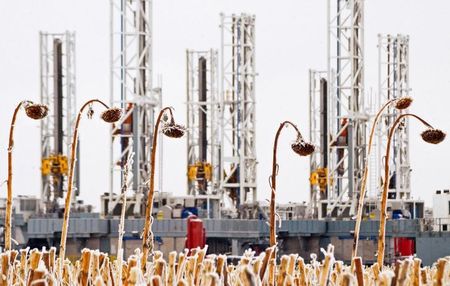
Investing.com — The question of whether U.S. oil output has reached its peak is increasingly important as global markets face heightened volatility and supply concerns.
As per analysts at BCA Research, U.S. crude oil production has not yet peaked and is expected to continue its upward trend, albeit at a slower pace than in previous years.
In August 2024, U.S. crude production hit a record high of 13.4 million barrels per day (b/d), marking a 3% increase from the prior year.
This growth underscores the resilience of the U.S. oil industry despite a broad global slowdown in production expansion. However, the growth rate has slowed compared to the 8% year-over-year increase seen in 2023.
The ongoing expansion is largely attributed to the Permian Basin, a key driver of U.S. output, which accounts for 48% of the country’s production and 8% of global supply.
“Over a 6-to-12-month horizon, the path of least resistance for oil prices is to the downside,” the analysts said.
First, energy companies are displaying capital discipline, with large, publicly listed firms focusing more on returning value to shareholders than on rapidly expanding output.
This trend is reinforced by consolidation in the energy sector, which reduces the number of small producers more likely to respond swiftly to market fluctuations.
Moreover, subdued oil prices are reducing the incentives for U.S. producers to substantially boost supplies. Analysts suggest that prices need to rise significantly—between $64 and $89 per barrel—to make new drilling highly profitable.
Current prices, hovering around $70 per barrel, do not offer strong motivation for increased drilling activity. This dynamic is reflected in the declining number of new wells being drilled and completed, signaling that producers are prioritizing efficiency gains over new drilling ventures.
In fact, despite a falling rig count and dwindling inventories of drilled but uncompleted wells (DUCs), U.S. production continues to expand due to improved well productivity.
Infrastructure developments, particularly in the Permian Basin, will also play a role in sustaining U.S. oil production. The expansion of natural gas pipeline capacity, set to alleviate current constraints in the Permian, is expected to enable continued growth in crude output.
Natural gas, a byproduct of oil drilling, has faced bottlenecks due to limited pipeline capacity, with prices at the Waha Hub in West Texas even dipping below zero for most of the year.
The completion of new pipelines like the Matterhorn Express is likely to ease these pressures and support ongoing production expansion.
Despite these positive indicators, a significant reacceleration in U.S. oil output is unlikely without a substantial price spike, potentially driven by geopolitical events.
The current business cycle slowdown and decelerating global demand are creating headwinds for oil prices.
“Hence, over a 6-to-12-month horizon, the path of least resistance for oil prices is to the downside,” the analysts said.
This post is originally published on INVESTING.




